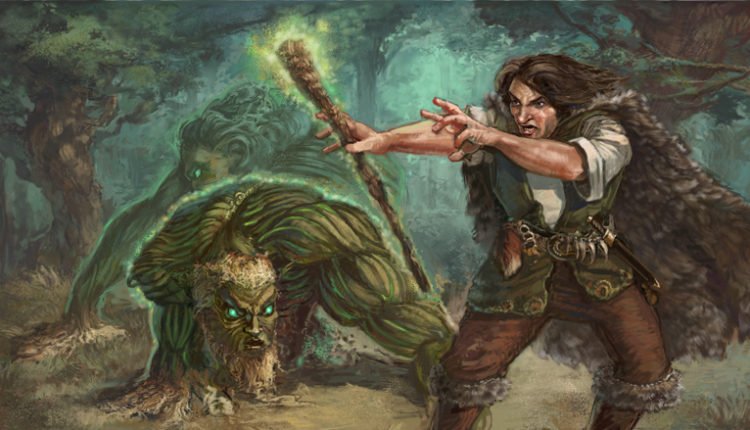Why Aren’t There More Bonus Action Cantrips?

This topic came to me as I was making my space cleric for a Hyperlanes campaign the other day. It’s essentially a 5e adaptation for Sci-Fi. I was skeptical at first since many 5e conversions are mediocre at best, but that’s not going to outweigh my one chance to play again.
For the record, the system is honestly fun so far, though we’re barely even a session into the campaign. I do have to say though, it’s got its issues. Primarily with the formatting of the PDF. It’s a mess.
The power level of Cantrips and spells (tricks & gambits) are another potential issue. They just seem so strong. There are a fair number of Cantrips in Hyperlanes that are cast using a Bonus action. For example, a Cantrip that’s a ranged Help action that’s cast as a bonus action onto an ally.
As I selected this Cantrip I started to think about why D&D 5e has so few Cantrips that are cast with a Bonus action. I’ve seen so many D&D Wiki-level homebrew Bonus action spells, but none have made it into the actual game. Why is that?
Well, it’s time to talk a lot about our old friend, the action economy. Join me as well dive into yet another look at the action economy and how spellcasters don’t need more of it!
Current Design Examples
There are a couple of Bonus action Cantrips in 5e right now. By “a couple” I literally mean a couple. There are two of them, Shillelagh from the PHB and Magic Stone from the Elemental Evil supplement.
Understandably, they’re super, super niche since, you know, they’re a Cantrip that has a 1 Bonus action cast time. I wouldn’t say that they’re bad in the slightest, but they’re niche in the sense that you’ve built your character in a specific way to utilize these Cantrips.
At least that’s the case for Shillelagh in my opinion.

Shillelagh
Have you ever wanted to be a warrior druid? Have you ever wanted to be a frontline tanky cleric that can deal increased melee weapon damage? Shillelagh is just the Cantrip for you. Well, if you’re a cleric with Magic Initiate (Druid) or a level dip into druid, but that’s beside the point.
Shillelagh buffs your weapon’s one-handed damage from 1d4 (2.5) in the case of a club or 1d6 (3.5) for a quarterstaff to 1d8 (4.5) which is already a pretty solid bonus. It also turns your weapon into a magical weapon which will allow it to bypass damage resistances to nonmagical bludgeoning damage.
This transformation is not permanent, but it lasts an entire minute. It also doesn’t require concentration meaning you can still lay down a Moonbeam while you go smacking creatures upside the head with your magical tree trunk.
Keep in mind too that both a club and a quarterstaff are one-handed weapons, so you can have a shield equipped while all of this is going on!
Magic Stone
Magic Stone is pretty underwhelming in my opinion, but it’s got its uses. The caster uses their Bonus action to create three magical pebbles that deal 1d6 + Spell Mod damage. They’re considered to be magical weapons and have a range of 60 ft. You can also allow your friends to use these pebbles to attack creatures.
This is nice if you’re fighting a slower flying creature and a frontline character doesn’t have a ranged weapon, or if the party is engaged with a creature that’s resistant to nonmagical bludgeoning, piercing and slashing damage. It’s a quick way for multiple people to bypass resistances.
Now is it worth using up one of your few Cantrips to pick up Magic Stone? Probably not, but it seems at least balanced to me despite it being super niche.
What Can We Conclude from Both of These?
The two official Bonus action Cantrips in 5e set a distinct pattern. Both Shillelagh and Magic Stone change a nonmagical item or weapon into a magical weapon for a minute. For the record, this is basically the maximum duration of any given combat encounter in D&D 5e.
While you can immediately deal damage with the weapon by making a weapon attack with your action after using one of these spells, it’s not a direct damage-dealing Cantrip.
They provide some utility in that they give the wielder a way to bypass resistances to nonmagical weapon damage, but that’s about it. There’s no healing or crowd control involved in either of these Cantrips.
Simply put, both Cantrips are there to set up the subsequent turns’ actions. They’re not going to do much of anything on their own.
This is the key here, a Cantrip that has a cast time of 1 Bonus action should exist solely for flavor, or to give the caster a new, unique use of their action for a short time. It gives the spellcaster a new choice.
What’s Wrong With Bonus Action Cantrips?
Giving a Cantrip a cast time of 1 Bonus action ensures that it can be used whenever the spellcaster desires. This is because most spellcasting classes don’t have a reliable use of their Bonus action so it’s essentially free real estate.
Granting a character more value in their action economy is always a buff. In this case, it can potentially be an enormous one.
There are, of course, some Cantrips that are either completely useless or are so niche that they’re not worth using one of your few Cantrip slots on them. For example, Blade Ward fits that bill.
It’s human nature to want to fix or improve upon something that is broken or not. Taking a useless or niche Cantrip and changing their cast time to 1 Bonus action is an easy way to make it much more enticing to take, but there are a few concerns that you should think of first before doing so.
Action Economy Woes
Casters gain much of their power in the variety that they bring to the party. They can wear many hats within the party.
And let’s be honest. Casters don’t need any help with dishing out tons of damage. The limitations that come from the Bonus action spellcasting rules and concentration keep spellcasters somewhat in check with their martial counterparts.
Martial characters can attack multiple times per action or dish out a single, heavy hit (rogues). Casters can sling a heavy nuke spell or rain down AoE on their enemies. Giving a spellcaster the ability to do both heavy AoE damage and use a cantrip to deal a decent amount of damage messes with this balance.
This same philosophy applies to non-damage dealing cantrips messing with the game. If a caster can deal damage and provide utility during the same turn, well why wouldn’t they?
The drawback to playing a spellcaster is needing to make choices based on the situation you’re currently in. Cantrips are designed as reliable safety nets for when you don’t need to utilize one of your spell slots. Cantrips aren’t here to maximize your damage or utility.

Diminishing the value of Class/Subclass Features
Disclaimer: These aren’t anywhere near all of the potential issues you could run into.
Metamagic: Quickened Spell
Metamagic is a feature that allows sorcerers to slightly change the properties of spells by using their class resource to do so. One of the options you can choose from is called Quickened Spell which lets the sorcerer cast a spell as a bonus action when it normally requires an action.
Now there are other uses of Quickened Spell such as using your action to dodge, dash, or disengage. However, in this scenario, utilizing Quickened Spell in a pinch to cast both a damage-dealing spell and Cantrip on the same turn for maximum damage potential came to mind immediately.
Changing Blade Ward to a Bonus Action
A common change I’ve seen to make Blade Ward a viable choice to spend one of your few Cantrip choices on is to change its cast time from an action to a Bonus action.
This lessens the value of the barbarian’s Rage. Sure, while Rage has other perks, it granting resistance to piercing, bludgeoning, and slashing damage is certainly the most enticing part of the feature. Being able to allow any spell caster or anyone with Magic Initiate to obtain Blade Ward would seriously harm the value of Rage in 5e.
This doesn’t mean that a spell such as Stoneskin impedes on Rage. First of all, it has a resource cost and a hefty one at that. Using a 4th-level spell slot is no joke. Second of all, it doesn’t even protect the user from magical damage of those types. Finally, it requires concentration to use and an action.
A spell having a similar effect to a class feature doesn’t necessarily mean that it’s encroaching on that feature’s niche or role. However, a Cantrip you can use constantly that provides a solid chunk of a feature’s usefulness is an issue.
Conclusions
Cantrips should be a consistent action that a spellcaster can take on their turn if the situation doesn’t require the use of a spell slot. Simply put, they should be viable options for dealing damage or providing utility. Cantrips shouldn’t be spells that regularly increase a spellcaster’s usefulness without any trade-off.
The primary benefit of playing a spellcaster is the variety that you have at your fingertips. Hell, you may be able to do anything in the game depending on your class and subclass choices. One of the ways that this is balanced out is that you cannot do everything at once. You are limited to making one or two major choices per turn.
Bonus action Cantrips can make this choice much less impactful. For example, you no longer have to choose between dealing damage and healing an ally, you could do both. That’s why, in my opinion, we have very few Bonus action Cantrips and probably won’t get too many more in the future.

Excellent, comprehensive analysis. My favorite content digs into the mechanical assumptions underpinning RPGs. This not only informs homebrew, but gives the DM more freedom on how to make informed rulings at the table.
Thank you! This was a fun one to write, too!
I found that multi classing can overcome the short comings of not having a good bonus action. I made a tempest cleric and found that as our group had no true tank, cleric,rogue,ranger,warlock that I got put into that roll and adding some fighter helped not only with beefyness but ,I did 3 levels and took battle master, also added some bonus actions I could use effectively.
Definietly, multiclassing is a great way to obtain a better action economy!
Battlemaster definitely has some great utility that you can utilize well. If you need damage, drop a Spiritual Weapon. Otherwise you have your maneuvers! Great choice!
Great and concise analysis! I also want to jump in with something else about how Bonus Action cantrips can compete with class abilities if unleashed too far. In a Tier 1 campaign, I’m playing a Circle of Dreams Druid right now; I have the fortunate opportunity, specifically because of my subclass, to do a little bit of healing with my bonus action each turn, if I’m not casting Magic Stone. If there were a viable damage mitigation Bonus Action cantrip (especially if it was for supporting allies, too), it would really compete with using the Circle of Dreams’ healing pool. Like the commenter above who mentioned going Battlemaster to get some use out of your bonus action, I wanted to indicate that there’s already enough ways in the game to use your bonus action in the many subclasses. More cantrips with the bonus action cost would be a negative to the health of the character creation system.
Thank you!
I agree and honestly I’m doubtful we’re going to see many more bonus action cantrips. I mean, we’ve gotten 2 in like 5 years!
Hi, one thing i would have thought about thats related to this is warlocks and bonus action cantrips, because warlocks at lower levels have so few spell slots that it would seem like a good way to add some variety to the endless eldritch blast combat
That’s why you see so many people grab Hex when playing a Warlock. It gives them a fairly regular use of their bonus action. Especially when they can maintain it for long periods of time at higher levels!
I do like this analysis, tho I might’ve found a way to balance Blade Ward as a Bonus Action. You have to change one thing. It’s not “Slashing, Piercing and Bludgeoning” anymore but “Slashing, Piercing or Bludgeoning”. That way, you chose only one type of damage to ward and Rage is still so much better. It’s also give a tactical view of the cantrip.
“You see a group of bandits, two have swords, two have hammers/clubs, one has a heavy crossbow”, “I cast Blade Ward as a ‘Piercing ward’! I don’t want that crossbow to hurt me…” The Barbarian, smirking, “I would like to RAGE! Magic is feeble against the might of muscles!”
And you can change depending on your foes, still really helpful, less game-breaking.
And also, few utility cantrips could be just Bonus Action, the kinds that don’t do anything to help in battle. (Well… It’s true that you can argue that a really creative player could find anything to harm someone… Even things like Create Food…)